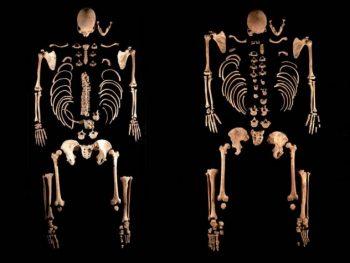Bennett McIntosh in Harvard Magazine:
 WHAT SECRETS DO THE EAR BONES of long-dead skeletons hold? Not ancient stories or sounds, but DNA. Genetic material from these human remains provides the basis for a new history of Iberia (modern Spain and Portugal), published today in Science by an international team of researchers at Harvard Medical School (HMS) and the Institute of Evolutionary Biology in Barcelona.
WHAT SECRETS DO THE EAR BONES of long-dead skeletons hold? Not ancient stories or sounds, but DNA. Genetic material from these human remains provides the basis for a new history of Iberia (modern Spain and Portugal), published today in Science by an international team of researchers at Harvard Medical School (HMS) and the Institute of Evolutionary Biology in Barcelona.
…One new story is the case of the vanishing Iberian men. About 4,500 years ago, a new population group showed up in Iberia. Unlike the preexisting occupants, whose ancestors seem to be a mix of Iberian hunter-gatherers and farmers who had arrived thousands of years earlier from present-day Turkey, the new group had genes most similar to peoples who had earlier migrated into central Europe from the steppes north and east of the Black Sea. (Previous research has indicated that this group’s movement may have brought Indo-European languages to much of Europe.) This steppe ancestry group and the preexisting Iberian populations seem to have co-existed throughout the region for centuries, with minimal interbreeding. But when the populations did start mixing, they did so in a “sex-biased” way, as revealed by the Y chromosomes, present only in men: the steppe group’s Y chromosome type became increasingly common, while the preexisting occupants’ Y chromosome types essentially vanished over the course of barely 200 years. For some reason the steppe males were fathering far more children than males from the preexisting groups. (For more on a similar event, see “Who Killed the Men of England.”)
A previously unreported migration that replaced the entire male population of a region the size of Texas is the sort of grand addition to the past that has drawn both acclaim and fierce criticism to Reich and paleogenomics.
More here.
